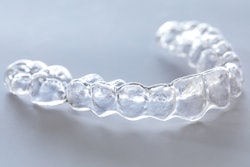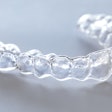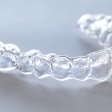A higher body mass index (BMI) may affect orthodontic treatment (OT) by altering craniofacial development and periodontal response. This review study was recently published in Seminars in Orthodontics.
Additionally, obesity may be linked to increased oral proinflammatory biomarkers and may affect pain perception during orthodontic tooth movement (OTM), the authors wrote.
"Orthodontists and dentists should incorporate BMI evaluation in orthodontic diagnosis and treatment planning and educate patients regarding the negative impact of obesity on general and oral health," wrote the authors, led by Dr. Dimitrios Michelogiannakis of the University of Rochester Eastman Institute for Oral Health in New York (Semin Orthod, February 7, 2025).
For this study, researchers reviewed studies on how increased BMI affects craniofacial development and orthodontic factors like periodontal health and discomfort. They aimed to summarize the obesity-orthodontics relationship, highlight clinical implications, and suggest future research directions, they wrote.
Studies suggest that plus-sized individuals may exhibit differences in craniofacial morphology, including bimaxillary or mandibular prognathism, increased cranial base and facial heights, and a thicker mandibular cortex. However, some research found no significant skeletal differences, and one longitudinal study reported no major growth rate variations between obese and non-obese children during OT.
Longitudinal studies show mixed results on obesity’s impact on OTM, with some reporting a slight increase in early OTM rates, while others found no association or a slower rate. Experimental studies suggest obesity may heighten inflammation and periodontal remodeling during OTM, potentially increasing the risk of alveolar bone loss or root resorption, they wrote.
Furthermore, plus-sized patients undergoing OT showed higher levels of inflammatory biomarkers in gingival crevicular fluid and saliva, suggesting increased periodontal inflammation, though no clinical differences in gingival or plaque indices were observed. Studies on obesity's effect on treatment compliance and discomfort yielded mixed results, with some linking higher BMI to reduced appliance wear, more appointments, and increased pain.
However, this review study had limitations. Most studies on BMI and OT were cross-sectional, retrospective, or short-term, highlighting the need for longer prospective research, the authors added.
"Obesity has a multifaceted inter-relationship with OT since an increased BMI may influence craniofacial form and development, periodontal tissue response, oral inflammatory biomarker levels and microbiome, as well as pain perception during OT," they concluded.




















